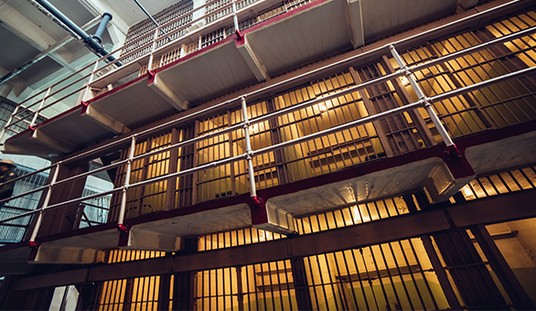
“Well, sir, I have some good news and some bad news,” reported Colonel Carlton Chase, United States Army Awards Branch, to General Aaron Clayton, Chairman of the Joints Chiefs of Staff. Chase sat in the general’s Pentagon office. His high and tight haircut rendered his light blonde hair almost invisible. His boyish good looks were marred only slightly by his wire-rimmed glasses and his Class-A uniform was impeccable, as usual.
Colonel Chase was assigned the task of reviewing records to determine if Medals of Honor should be awarded to African-American servicemen in World War II. It was Chase who, working with a specially selected team of historians from academia, developed the evaluation procedures used to analyze World War II combat records for possible medal upgrades.
In Carlton Chase, the general found a person of integrity, high principle and great respect for military honor and tradition. It was important to the general, on many levels, that outsiders perceive the results of this review board as a fair and deserved outcome to remedy prior injustices, and not motivated by political expediency.
When Secretary of the Army Charles Radcliffe and Clayton left the President’s Oval Office back in February, it took Radcliffe all of five minutes to punt this mission to the general.
“Well General, this is entirely in your sweet spot,” Radcliffe began as soon as the limousine made a right turn onto Constitution Avenue. “Have your team do the same thing they did with that World War I Medal and let me know when you’re done so we can schedule a follow-up meeting with the President. I’ll advise the SecDef but I suspect this will be an army show, so please handle it.”
Clayton pondered for a moment. He was about to explain how much more difficult and complicated this task would be when Radcliffe’s cell phone rang. With a dismissive wave of the hand he slipped his phone from his inside pocket, turned his body toward his side window and began speaking.
As the limo approached the Theodore Roosevelt Bridge, Clayton could see the outline of the Iwo Jima Memorial Statue on the Virginia side of the Potomac River. It was just one of the many symbols he saw in and around Washington, D.C. every day. Those symbols silently, yet incessantly, testified to the unbroken chain of sacrifice made by generations of Americans from the Revolutionary War to Desert Storm. They represented the price paid in American blood to preserve and protect this country and defend its liberty. Honoring and remembering their dedication and sacrifice was the only way to appropriately acknowledge that great debt; a debt that could never be truly repaid. Aaron Clayton lived by that creed.
A West Point graduate and teacher at the War College, General Clayton was both a warrior and an ardent student of military history. Three tours in Vietnam, a Silver Star for gallantry and two Purple Hearts later he found himself on a fast promotion track. It had all happened so fast, one successful command after another, promotion after promotion when suddenly he realized the pinnacle of his ascension as Chairman of the Joint Chiefs of Staff with four silver stars on his shoulders.
Shoulders, he thought. Whose shoulders have I stood on to get here?
The student and teacher in him reminded him constantly so many others paid dearly for him to be where he was. He knew military history extraordinarily well, particularly the history of the United States Army. He knew black Americans had served with distinction in every war since the Revolutionary War but more often than not their deeds had been overlooked or minimized. The Hollywood movie Glory brought some long deprived attention to the 54th Massachusetts Volunteer Infantry, who fought with distinction during the Civil War, but there were many other all-black units and individuals who fought bravely for this country. What the movie Glory did not portray, and what Clayton knew all too well, was the first Medal of Honor awarded to a black soldier was given to Sergeant William H. Carney of Company C, 54th Massachusetts, for bravery and wounds received at Fort Wagner, South Carolina in July of 1863. The movie also did not accurately portray that over 160 all black regiments, nearly 180,000 soldiers, served the Union in that bloody strife.
After the Civil War, Congress authorized the establishment of six Negro army regiments, two cavalry and four infantry, whose billets were quickly filled by Civil War veterans. The 38th, 39th, 40th and 41st Infantry Regiments served well as the nation pushed westward and encountered the hostile Native Indian tribes. These four units were eventually consolidated into the 24th and 25th Infantry Regiments.
Clayton also knew the 9th and 10th Colored Cavalry Regiments helped to open the American West and served alongside Teddy Roosevelt’s Rough Riders in Cuba during the Spanish American War. The 10th fought courageously in the battle of Las Guasimas and both regiments were with the Rough Riders in their famous charge up San Juan Hill a few days later. However, the contemporary media as well as the War Department ignored their accomplishments. These black units were never adequately recognized for their contributions nor were they particularly well known anywhere outside of military circles.
Clayton authored a paper for the War College detailing how the 369th Infantry Regiment of the 93rd Division established an outstanding fighting reputation in World War I. He was surprised how few knew of its existence.
In the Second World War, the 99th Fighter Squadron and the 332nd Fighter Group, known as “The Tuskegee Airmen”, were given some recognition by a made-for-TV movie but the 92nd Infantry Division, “The Buffalo Soldiers”, and the superbly trained 761st Tank Battalion, “The Black Panthers”, remained virtually unknown to the American public. Clayton believed these units held the best possibilities for the Medal of Honor. From September 1944 until the end of the War in May 1945, the 92nd was in continuous combat as part of the IV Corps of the Fifth United States Army in Italy. The 761st Black Panthers fought with great distinction while attached to the 26th Infantry Division, “The Yankee Division”, in General George S. Patton’s Third United States Army. In combat for 183 consecutive days, the Black Panthers participated in the relief of Bastogne in the “Battle of the Bulge” and was eventually awarded a Presidential Unit Citation. If there were to be any medal upgrades or previously overlooked awards for bravery, it would invariably come from these units or from the lesser known, almost anonymous, “5th Platoons”.
Clayton considered the saga of the 5th Platoons one of the most shameful episodes in the history of the United States Army. After D-Day, as American forces pushed across France toward Germany, the casualty figures began to mount at a terrifying rate. As the number of killed, wounded and missing approached 350,000, General Dwight David Eisenhower took drastic action to replenish the depleted ranks of riflemen. Back in the United States, units not immediately scheduled to deploy to the European Theatre of Operations (ETO), were stripped of their trained cadres who were sent to front line units as replacements. Non-combatant units were combed for anyone who could shoot an M-1 rifle. Training cycles were shortened. Aviation cadets and Army Specialized Training Personnel were re-assigned and trained as infantry replacements. Any warm-blooded GI who could carry a rifle was snapped up for frontline infantry duty. Despite those efforts, the shortfall still could not be fully met.
Eisenhower was already seriously concerned about being able to field an adequate force for the final push into Germany when the Germans surprised the Allies with an offensive through the Ardennes in Belgium just before Christmas of 1944. The Battle of the Bulge yielded another 80,000 casualties. Eisenhower was now absolutely desperate for any solution to the chronic shortage of trained riflemen.
Lieutenant General John Lee was the commander of the Service of Supply troops in the ETO. He saw the hundreds of thousands of black troops under his command as a solution to the infantry shortage. He suggested some be trained as replacement riflemen. The American high command rejected his suggestion.
They were not yet ready or willing to integrate the army at the individual unit level. They would, however, accept segregated platoons to augment their battle- depleted companies and regiments.
Thus the concept of the 5th Platoon was born. Under-strength combat infantry companies would receive an extra platoon of black infantrymen, led by white officers, to function as a separate unit under the company commander. Despite having to give up their stripes for this combat duty, there were over 2,200 volunteers, enough to train fifty-three rifle platoons. By March of 1945, most of them were assigned to one of eight infantry and two armored divisions.
In spite of the apprehensions of the high command, these units were readily accepted on the front lines. Most white soldiers reduced the assignment of Negro troops as reinforcements to the simple math of the battlefield; just another target for the Germans to shoot at, other than themselves.
Insofar as performance, Clayton also knew the battlefield execution of these units was essentially the same as with all-white units. Some units performed better than others. Some were better trained and better led. They spanned the performance spectrum from excellent to adequate; exactly the same as their white brothers-in-arms. There was nothing in their racial make-up or culture that made them any better or worse at bleeding or at making the enemy bleed. While the 5th Platoons represented only a fraction of the nearly one million men of color who served as drivers, stevedores and other non-combat roles, these volunteers served under fire with distinction. They did the dirty, personal job of killing the enemy. For a few months, near the end of the War in Europe, they were American combat soldiers and would forever wear the coveted Combat Infantryman’s Badge (CIB).
General Clayton held this ignominious chapter in the history of the United States Army in great disdain. But not because the troops were prevented from being assigned as individual replacements; not since the Revolutionary War were black soldiers incorporated into white units. What disturbed Clayton most occurred after the fighting stopped. The 5th Platoon units were ordered disbanded. To many, this was the ultimate indignity. Even though each one had earned his CIB, they were separated from the units they fought with and returned to their prior non-combatant service units. They would not be allowed to take their earned and rightful place alongside their white brothers-in-arms and they would be denied the public recognition they earned. There were virtually no records kept of their performance. As a result, the deeds of these brave men and their heroic sacrifices were largely forgotten to history.
This little known chapter in the annals of the United States Army in World War II appalled the sensibilities of General Clayton. The inaccurate and often-exaggerated claims of some contemporary black spokesmen on behalf of previously overlooked exploits of black military men bothered him as much.
As if revising history and embellishing the record somehow compensated for deserved recognition never received. Two wrongs never made a right in Clayton’s mind and he held those who ignored great achievements and those who purposefully overstated them with equal contempt. He could not afford to have any exaggerations in determining the worthiness of black men to receive the Medal of Honor.
What he currently sought was a fair shake for these African-American warriors. It was the same thing every American soldier who went into harm’s way expected; trustworthy leadership, fairness, and the opportunity to be judged solely by his actions under fire.
Radcliffe didn’t get off his cell phone until they were both well inside the Pentagon and heading toward their respective offices. It was clear General Clayton had the ball on this project. Balancing the objective fairness of any action with the public relations benefit was paramount. Honoring the duty and sacrifice of some, without disrespecting or diminishing the sacrifice of others would be the challenge. He would have the unique opportunity to correct past injustices. For the sake of everything he believed in he had to get this right.
Clayton was also acutely aware of other similar injustices. He was especially sensitive to the Japanese-Americans who served with distinction in World War II and the tragedy of Master Sergeant Llewellyn M. Chilson, the greatest American combat soldier who never won the Medal of Honor. He both wondered and worried if he would someday be able to correct all of these omissions but decided to deal with that later. Right now, he was faced with a particularly treacherous political high-wire act and all the pressure was squarely on him.
Especially since he himself was African-American.
“Give me the bad news first, Colonel.”








Join the conversation as a VIP Member